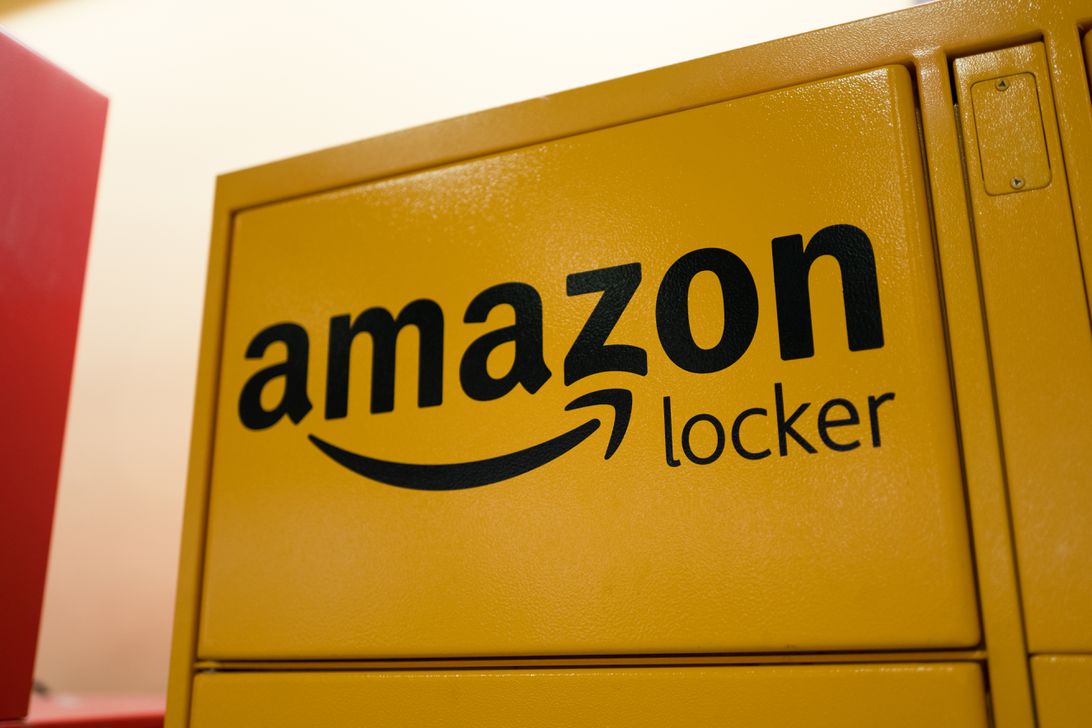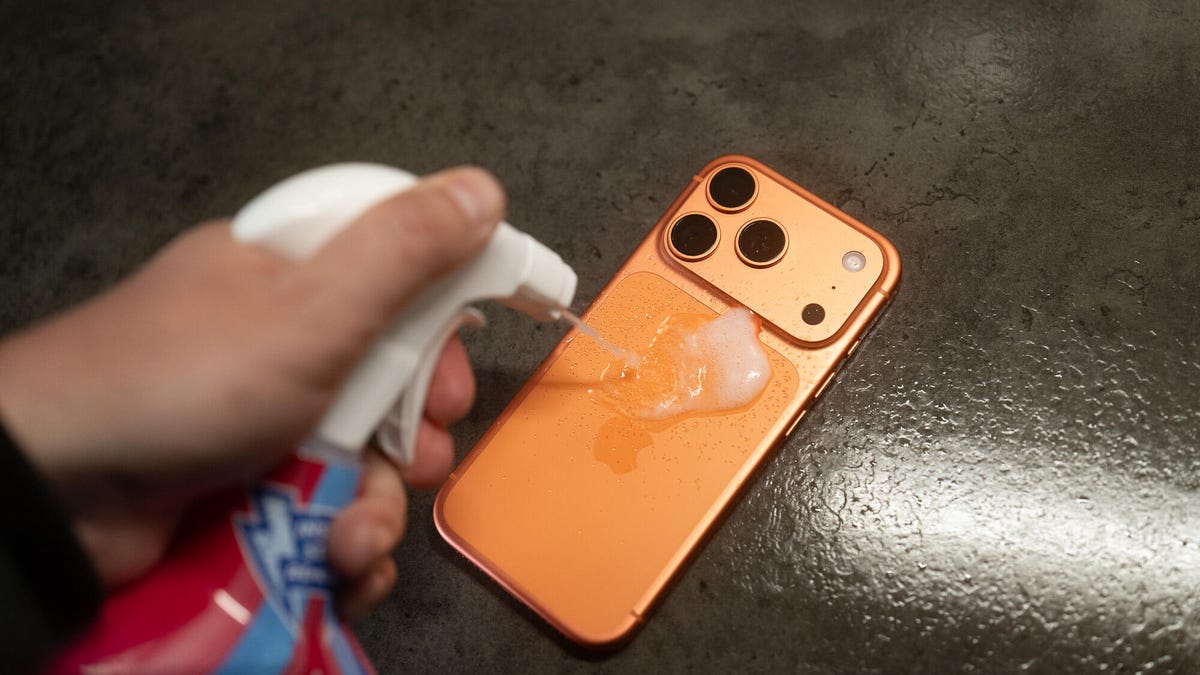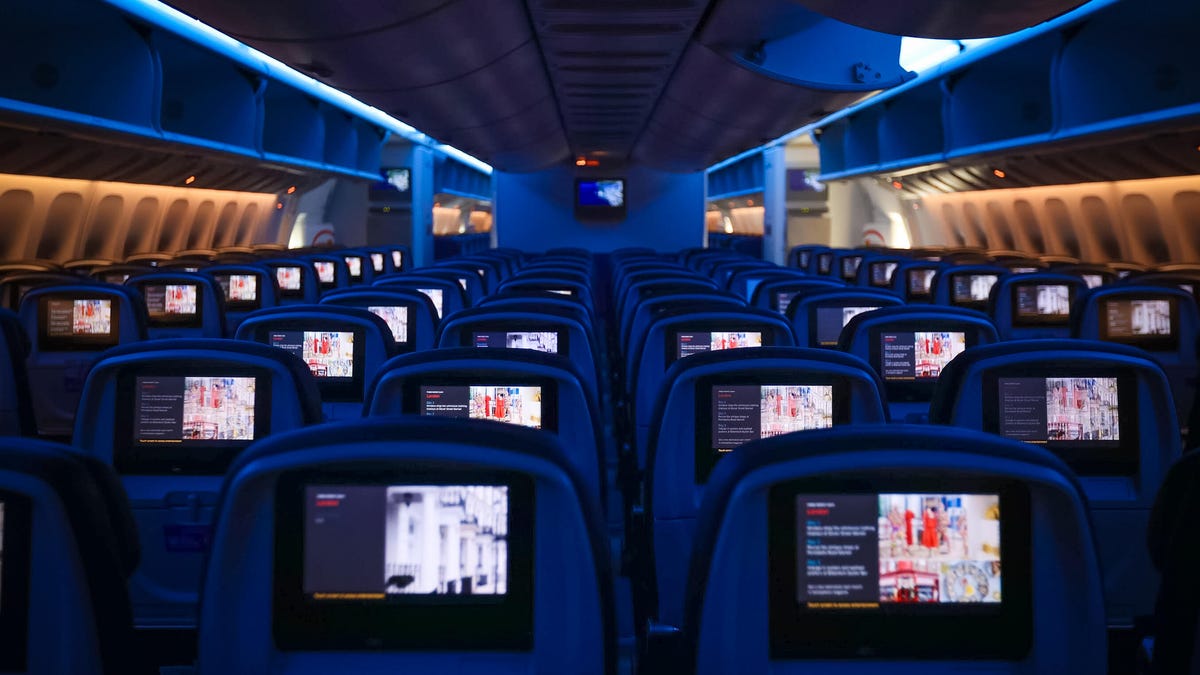Technologies
Amazon lockers are popping up in odd places. They aren’t always welcome
The company has installed lockers in places like a park’s path and an obscured side of a gas station, blocking walkers and tempting criminals.

Amazon installed a clutch of metal lockers outside a Fresno, California, gas station convenience store built in 2019 so customers could pick up packages they didn’t want delivered directly to their homes. The shiny lockers shared a computerized screen and sported the e-commerce giant’s ubiquitous smile logo.
The problem, according to a Fresno city councilmember’s complaints last November, was that they were placed along the side of the building, out of sight of security cameras. It wasn’t hard to predict what happened next: Someone tried to get into the lockers.
The attempted break-in should have been a palm-to-forehead moment for Amazon, says the councilmember, Miguel Arias, because that unmonitored location was sure to tempt criminals. After all, the lockers could collectively hold thousands of dollars of merchandise, far more alluring than the inexpensive bags of ice typically found in vending machines in front of the pumps.
«I don’t know how they landed on a gas station,» Arias said of Amazon’s decision to install the lockers. «It’s where you get a beer on your way home after hours, not a place where you go to get your $500 iPhone.» (The convenience store, a local chain called Johnny Quik, didn’t respond to a request for comment.)
Fresno isn’t alone in experiencing frustration with Amazon lockers as the company installs them across the country to thwart thieves looking for its easy-to-recognize packages on neighborhood stoops. Chicago residents were baffled when a set of Amazon lockers were installed directly onto a walkway in a city park, partially obstructing a path and adding corporate branding to leafy municipal amenities. Photos of the lockers were widely shared on Twitter and Reddit. Businesses have also had second thoughts after striking deals to host the lockers.
The Chicago conflict taps into larger objections to corporate intrusion onto public property. Corporate names have been added to subway stations and high school sports stadiums. Even the National Parks Service has pondered naming benches and interior spaces after corporate donors. Transit agencies cover buses and fill train stations with ads.
An Amazon smile in a Chicago park might strike some as a small, if obtrusive, element of the tapestry of corporate messaging already in the public sphere. Still, activists and civic planners question whether parks should be added to the list of corporate logo-filled locations. Park space is supposed to serve everyone, not just Amazon customers, said Jennifer Minner, a professor of city and regional planning at Cornell University.
«Installing lockers that essentially serve people who are spending money is taking away a broader public benefit that serves more people,» Minner said.
Most locker placements are uncontroversial, and lockers at bus depots and 7-Elevens rarely raise eyebrows. Nevertheless, an awkwardly located locker plays into a broader image problem Amazon has had in managing local relations. The company has been blamed for putting Main Street booksellers and local retailers out of business with predatory low pricing. And community activists have raised concerns about working conditions for Amazon’s subcontracted delivery drivers and at its warehouses — which are sometimes set up in the disused malls it’s blamed for putting out of business.
Amazon didn’t provide information about whether it implements safety and crime prevention measures around its outdoor lockers, or whether that’s the responsibility of the organizations hosting the lockers. But Av Zammit, an Amazon spokesman, said in a statement that the company values community feedback. Amazon is reviewing the locker placement in Chicago «to ensure they are all located in appropriate areas that serve both customers and the community,» he said.
Amazon spokesperson Alyssa Bronikowski provided further comment. «We have been working closely with the Chicago Park District since 2020 to add Amazon Lockers following requests from the district for this added benefit for the community,» she said. «The focus of our partnership has been to provide park patrons and community members with access to a secure and convenient delivery option.»
Amazon launched its lockers 10 years ago in Seattle, New York state and the Washington, DC, area. Since then, the lockers have been part of its Amazon Hub service, which includes Whole Foods locations where Amazon customers can pick up their packages at the counter. As of 2019, Amazon said it had installed lockers in more than 900 cities and towns in the US.
Some high-rise apartments also have lockers installed so tenants don’t have to wait at home for a delivery or depend on an apartment manager to give them their packages. Amazon Locker Plus locations offer self-service kiosks as well as an Amazon attendant to help. UPS also offers delivery lockers with its Access Point Program, and some third-party companies offer lockers that accept packages from multiple carriers. Walmart installed parcel lockers in its own stores, but recently began phasing them out.
Locking out porch pirates
Amazon markets the locker installations as a way to combat porch piracy, another problem the company helped create. The lockers also serve as a source of income for public agencies and businesses that host them, though in many cases the rent Amazon pays isn’t disclosed. In Jacksonville, Florida, for example, Amazon partnered with the transportation authority to install lockers at bus terminals and transportation hubs. The agency didn’t respond to a request for comment.
The company struck a similar arrangement in Johnson County, Kansas, with local 7-Eleven stores. 7-Eleven didn’t respond to a request for information on how it handles the safety of outdoor lockers.
Neither partnership has prompted complaints about safety or vandalism.
Still, the placement of Amazon lockers hasn’t always gone smoothly. Staples and RadioShack ended agreements with the company in 2013, removing a service that had invited a competitor into their stores. A set of lockers at Sacramento State University in California was removed two months after it was installed in 2014 because the campus bookstore had the exclusive right to serve as a bookseller at the college.
Few installations have gone as poorly as a recent placement in Chicago’s Brands Park.
In photos posted online, one monolithic segment of lockers appears to consume roughly a third of the walkway and create a blind corner. The placement is near a fence that would make it difficult for a delivery person to unload a dolly of packages while still leaving room for park visitors to get by, especially a visitor who’s in a wheelchair or pushing a stroller.
Community members quickly objected. A petition calling for the removal of the lockers appeared on Change.org and racked up more than 13,000 signatures. (The goal was 15,000.) Alderwoman Rossana Rodriguez-Sanchez, who represents the ward that includes the park, complained about the corporate logo marring public property even though the city was getting rent for the placements.
Rodriguez-Sanchez said on Twitter that the Amazon-branded behemoths are «a slap in the face,» in part because they would net the parks department roughly $137,600 in the first year, at most.
The lockers have been removed from Brands Park, as well as another Chicago park. The program, which had already led to the installation of lockers in 49 parks and aimed for a total of 102 lockers locations, is on hold while the parks department reviews Amazon’s plans.
There’s also the question of how safe Amazon customers might feel going to a park after work, potentially in the dark, to pick up a valuable package. In Fresno, city councilmember Arias said the lockers at the Johnny Quik have become an amenity for his constituents because the convenience store increased safety by installing additional lighting and security cameras. Still, he wondered how no one thought of that concern to begin with.
«You can credit Amazon for a lot of innovation in their logistical delivery system,» Arias said. But the initial installation showed «a lack of understanding of the local community.»
Technologies
Can Chemicals Turn My Orange iPhone 17 Pink? Here’s What I Found Out
There are reports that some cosmic orange iPhone 17 Pro handsets are turning pink. I threw chemicals at my iPhone to see what would happen.

A recent Reddit thread suggests that it’s possible for a cosmic orange iPhone 17 Pro to turn vibrant pink. As PCMag’s Eric Zeman noted, it’s likely that the phone has been discolored by cleaning substances that affected the finish, turning it from vibrant orange to a wild hot pink. Sure, this might technically be a fault, but in all honesty I love pink phones and the idea of a hot pink iPhone 17 Pro filled me with joy. So I wanted to see if I could test the theory and see just what color-changing effects various household cleaners might have on my phone.
It’s important to note here that the iPhone 17 Pro I used was bought by CNET for the purposes of testing. Had I paid over $1,000 of my own money I wouldn’t be so reckless in smearing it with chemicals that could potentially irreparably harm it. And you shouldn’t either. If you need to clean your phone, do it safely. Disclaimer aside, let’s dive in.
The chemicals
I bought two chemicals to test this out. Zeman explains that it may be oxidation that caused the color to change and that hydrogen peroxide could do this. I couldn’t find this over the counter in the UK, so I instead bought an «oxy-active» stain remover spray that, among other things, contains «oxygen-based bleaching agents» which sounded ideal. Apple also clearly states «don’t use products containing bleach or hydrogen peroxide» on its support page so, naturally, I bought some thick bleach too.
Oxy application
I started by spraying the oxy cleaner on a microfiber cloth until it was noticeably wet from the liquid and then liberally applied this all over the rear of the iPhone. The Reddit user with the affected phone showed that it only affected the metal parts, not the glass back panel, so I made sure to focus my attention on the sides and camera bar.
With the phone well and truly doused in chemicals that have no business being anywhere near a phone, I left it to sit and think about what it had done for 30 minutes — after which time I wiped it dry and took a close inspection. Disappointingly, my phone was still factory orange, rather than «what the hell have you done to your phone» pink. Time to move on.
Bleach blast
I opened the bleach and trying hard not to think about my days as a middle school cleaner, applied a liberal blob of the stuff to a cloth and smeared it over the defenceless phone, concentrating again on the metal areas. I definitely should have worn protective gloves for all of this so please make sure you take better care of yourself than I do if you do anything with bleach.
Again, I gave it a 30-minute settling in period before cleaning it off and inspecting the results.
The phone remained as orange as ever, looking as box fresh as it was the day before when it was, indeed, box fresh. The orange color hadn’t changed and now almost 24 hours later there’s still no sign of discoloration of any kind.
Is the pink iPhone 17 real?
I can’t say with any certainty whether the Reddit user’s images of a pink iPhone 17 Pro are real or not. The cuddly human side of me wants to take them at their word, while the journalist in me is sceptical. What I can say with certainty is that putting your orange iPhone into close contact with household cleaning products isn’t going to win you a funky, ultra-rare pink hue that you could sell on eBay for a small fortune.
It’s possible that using pure peroxide could be the thing that does it, but to be honest, if you’re going out of your way to throw industrial-grade chemicals at your phone then you may as well just directly try and dye it. My goal here was to see how susceptible the orange model is to everyday household cleaners such as kitchen cleaner or bathroom bleach — the sort of things it might naturally come into contact with in routine use. And what I’ve found is that, no, it won’t ruin the nice orange color. But it’s probably still not good for your phone.
Technologies
My Teen Loves Her Apple AirPods Pro 2 and You Will Too With This $100 Off Deal for Black Friday
Apple’s AirPods Pro 2 have everything you could want from a pair of wireless earbuds, plus a steep discount.

Black Friday deals: The Apple AirPods Pro 2 are some of the best personal audio gear on the market, even if they aren’t the latest model anymore. Sure, Apple’s AirPods Pro 3 are the newest earbuds in the lineup but the AirPods Pro 2 are still an excellent pick for most people.
They’re an even better buy this week during early Black Friday sales when you can get your hands on a pair of Apple AirPods Pro 2 at a discount. Right now, Walmart is shaving a massive $100 off the AirPods Pro 2, dropping the cost to $139. That’s one of the lowest prices we’ve seen — but we doubt this deal will stick around for long.
Don’t miss any of our unbiased tech content and lab-based reviews. Add CNET as a preferred Google source.
HEADPHONE DEALS OF THE WEEK
-
$248 (save $152)
-
$298 (save $131)
-
$170 (save $180)
-
$250 (save $200)
CNET’s key takeaways
- You can get these amazing earbuds for just $139 right now at Walmart.
- My teenager loves everything about them.
- The sound quality is exceptional.
- The noise cancellation can help give you some peace, even in a busy home.
My 13-year-old daughter loves her music and her privacy, and for years she has wanted a pair of AirPods. They’re not cheap so I’ve only been getting her more budget options, like the Amazon Echo Buds, as a result. These kept seemingly disappearing, though, so I finally ponied up for the AirPods Pro 2.
I picked them up during last year’s sales, and they were definitely well-received. She’s happy, she uses them every day, and she hasn’t lost them yet. The AirPods Pro 2 are currently on sale at Walmart for $139, a nice price for a high-quality pair like these, and one of the lowest we’ve seen.
What about the AirPods Pro 3?
The AirPods Pro 3 weren’t available at the time I bought the AirPods Pro 2, but they were rumored, and I didn’t wait to see what they offered. As CNET’s resident headphone expert, David Carnoy summarized in his AirPods Pro 3 and Pro 3 comparison, the newer model is «significantly improved in the four most important areas: fit, sound quality, noise cancellation and battery life.» They also have heart-rate monitoring, like the Beats Powerbeats Pro 2.
Hey, did you know? CNET Deals texts are free, easy and save you money.
While these are undoubtedly all important things, a lot of people aren’t going to notice the differences or make the most of the new features. With the AirPods Pro 3 being newer, they’re on a smaller sale and are currently available at Amazon for $220, which is $30 off the list price.
Why I didn’t get the AirPods 4 instead
Why did I choose AirPods Pro 2 instead of the AirPods 4 with ANC? First, as I mentioned in another article about a different pair of earbuds I bought, I think sealed, in-ear buds are better than open-design models like the AirPods 4. The seal creates another layer of noise isolation and contributes to superior sound quality, and if you want to pay attention to the world you can always engage ambient sound mode, which Apple calls transparency mode.
Also a factor was that, at the time, Carnoy considered the Pro 2 the best Apple noise-canceling wireless earbuds: «While we’re quite impressed with those new models — and with the AirPods 4 ANC in particular — the AirPods Pro 2 remain arguably the best Apple AirPods you can buy if you don’t mind having silicone ear tips jammed in your ears,» he said.
My daughter uses earplugs all the time to help her sleep, so she definitely qualifies as somebody who’s comfortable stuffing things in her ears. Like her fingers, when I start using words like «sigma,» «skibidi» and «relatable» to try to relate to her.
I asked Carnoy about the Pro 2s potentially not fitting in her kid-size ears and he reassured me that the range of eartips that come with the Pro 2s «now include XS, so they should fit.»
Do AirPods make a great gift?
It took me years to finally understand, but yes, for someone looking for wireless earbuds, AirPods — especially the Apple AirPods Pro 2 — make the perfect gift, regardless of whether you’re a teenage girl.
Join Our Daily Deals Text Group!
Get hand-picked deals from CNET shopping experts straight to your phone.
By signing up, you confirm you are 16+ and agree to receive recurring marketing messages at the phone number provided. Consent is not a condition of purchase. Reply STOP to unsubscribe. Msg & data rates may apply. View our Privacy Policy and Terms of Use.
Technologies
If You’re Flying for the Holidays, This Bluetooth Dongle Transforms In-Flight Movies, and It’s 35% Off for Black Friday
Watch airplane movies just like you would at home with this game-changing device.

Air travel for the holidays can be stressful, especially when winter weather or flight delays force a change of plans, but one perk of flying still remains — watching new-release movies. However, in-flight entertainment on most airlines usually requires a wired set of earbuds. (And the ones the airline hands out are so bad they may as well not even be connected.)
I’d far prefer to use my wireless, noise-canceling AirPods Pro, but they connect only via Bluetooth. There’s a simple tech solution that makes viewing movies on the plane feel more like watching them on your couch.
The AirFly is a simple Bluetooth dongle that allows me to connect my wireless earbuds directly to the airplane’s entertainment system, eliminating the need for adapters or wired workarounds.
It’s become a must-pack item in my travel bag. Since I started using it, I’ve stopped dreading in-flight audio and finally get to enjoy movies on the plane. If you fly often, this little gadget could completely change how you travel. And the base level AirFly SE is 35% off for Black Friday at Amazon.
The AirFly Pro lets me enjoy in-flight entertainment
The AirFly Pro from Twelve South is a minimally designed dongle that allows me to connect to the 3.5mm headphone jack in my airplane seat, enabling me to listen to in-flight entertainment on my noise-canceling earbuds.
All I have to do is pair the AirFly with the Bluetooth headphones I’m using, such as my AirPods Pro, plug the AirFly into the display in front of me, and I’m all set. I don’t even need to use my phone to connect the two devices.
There are several versions of the AirFly: the AirFly SE, which is currently on sale for $26 on Amazon and connects to just one set of headphones, the AirFly Pro at $55, the Pro V2 at $60 and the Pro 2 Deluxe at $70, which comes with an international headphone adapter and a suede travel case.
Hey, did you know? CNET Deals texts are free, easy and save you money.
I use the AirFly Pro, which has been a game-changer for me on flights. I’ve never had to worry about battery life since the AirFly Pro lasts for over 25 hours and can be fully charged in just three hours. I can also pair two separate pairs of headphones to a single AirFly Pro, in case I’m with someone else on a flight and want to watch the same movie or show.
And if that’s not enough, the AirFly Pro also doubles as an audio transmitter, allowing me to turn any speaker with a headphone jack, such as my old car stereo, into a Bluetooth speaker.
The AirFly Pro makes a great gift for any traveler
The AirFly Pro is the perfect present to give to someone who’s planning to travel this year. Besides my Anker MagSafe battery pack, the AirFly Pro has become my most treasured travel accessory when I fly, which is why I consider it one of those can’t-go-wrong gifts.
For more travel gear, here are our favorite tech essentials to travel with and our favorite travel pillows.
Join Our Daily Deals Text Group!
Get hand-picked deals from CNET shopping experts straight to your phone.
By signing up, you confirm you are 16+ and agree to receive recurring marketing messages at the phone number provided. Consent is not a condition of purchase. Reply STOP to unsubscribe. Msg & data rates may apply. View our Privacy Policy and Terms of Use.
-

 Technologies3 года ago
Technologies3 года agoTech Companies Need to Be Held Accountable for Security, Experts Say
-

 Technologies3 года ago
Technologies3 года agoBest Handheld Game Console in 2023
-

 Technologies3 года ago
Technologies3 года agoTighten Up Your VR Game With the Best Head Straps for Quest 2
-

 Technologies4 года ago
Technologies4 года agoBlack Friday 2021: The best deals on TVs, headphones, kitchenware, and more
-

 Technologies4 года ago
Technologies4 года agoVerum, Wickr and Threema: next generation secured messengers
-

 Technologies4 года ago
Technologies4 года agoGoogle to require vaccinations as Silicon Valley rethinks return-to-office policies
-

 Technologies4 года ago
Technologies4 года agoOlivia Harlan Dekker for Verum Messenger
-

 Technologies4 года ago
Technologies4 года agoiPhone 13 event: How to watch Apple’s big announcement tomorrow
